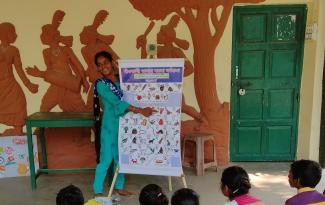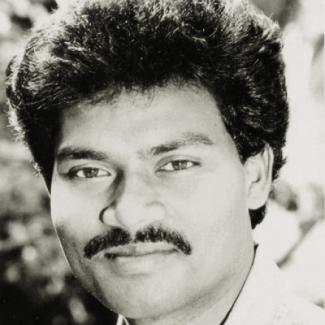Minorities
An Indian Adivasi community is divided by scripts

Script is important for the sustainability and development of a language. In the long-term, writing requires a codified grammar, precise definitions of what words mean and standardised spelling. Without those rules, texts are hard to read. They become established as a literary tradition evolves. At the same time, that literacy tradition helps to define the values and norms of the people whose mother tongue this language is. Writing thus shapes the identity of the community concerned. All of these trends are reinforced if and when a formal education system uses a written language.
For us Santals, however, the debate on what alphabet to use has become divisive. We have too many options for writing in our language.
Among South Asian Adivasis, we are the largest homogenous group. More than 10 million people belong to Santal tribes in India’s eastern states as well as in Bangladesh and Nepal. Our tribes are outside the Hindu caste system and have been marginalised historically.
Santali, for example, has survived and evolved over the millennia in oral tradition. It is an Austro-Asiatic language that is related to Vietnamese and Khmer, but not to the Indo-European languages prevalent in our part of South Asia.
In the 1890s, Christian missionaries found it helpful to write in Santali. They used Roman (Latin) letters. This alphabet, of course, has been used in many parts of Europe since the days of the Roman Empire. The missionaries wrote down folktales in Santali and documented traditional medicine as practiced by our community. They codified the grammar of the language and compiled dictionaries. Moreover, they designed reading primers, especially in order to teach Santal children.
The seventh alphabet
Education began to spread among Santals, and was not only driven by Christian missionaries. Typically, people opted for the scripts that were predominant in the region. Where most people speak Bengali, Santals used the Bengali alphabet. Where Hindi or Nepali are more common, they opted for Devanagari, which is related to, but differs from the Bengali alphabet. Where Oriya is the lingua franca, however, that language’s script was chosen, which is entirely different.
The sad truth is that Santali language and literature started to develop in six different scripts. To some extent, those alphabets were modified to better suit our language, but none of them accurately reflects Santali phonemes. The more depressing problem, however, is that Santal writing in different alphabets does very little to unite our community across the regions. It neither helps us communicate among one another nor does it foster a stronger sense of self-confidence.
This pattern persists however. The main reason is that it makes sense for a minority community to use the regionally prevalent script. In West Bengal, most Santal children attend state schools where Bengali is the language of instruction. In the neighbouring states, other languages are prevalent. At the same time, Latin letters are still in use as well, not least because some of the books prepared early on by the missionaries are still in print. They are indeed very useful.
Things have become even more complicated in the past two decades because government agencies started to approve a seventh script. It is called Ol-chiki and was designed to more accurately represent Santali phonemes. Since the turn of the millennium, state institutions have been promoting this innovative alphabet consistently, and they now consider it the only legitimate way to write in Santali (see box).
While many Santals wanted that to happen, the results are unconvincing. It is ironic, to put it mildly, that many well educated Santals who assertively endorse Ol-chiki as a token of Santal pride prefer to send their own children to schools that teach in Bengali or English. They know that their kids will have more opportunities in life if they are taught in Bengali, Hindi or English.
Our choice
The community-based organisation I work for runs a non-formal school for Santal children. We have chosen to use the Bengali alphabet. We know for certain that our pupils will have to be able to read Bengali later in life, and we do not want to burden young children with learning more than one script.
When they start school, we introduce Bengali letters and numbers for Santali words, and once they comfortably read the primers we have designed, we gradually move on to teaching them Bengali and later English as well.
We do our best to make them proud of our culture. We teach the kids traditional songs and dances. We regularly take them to a museum of Santal culture which we have set up in one of our villages and which displays more than 150 artifacts (see my contribution in Tribune section of D+C/E+Z e-Paper 2016/06).
Our curriculum covers topics that pertain to our village lifestyle, including organic farming, fisheries, vegetable gardening, beekeeping or herbal medicine. Of course, Santal history figures too. We want our young generation to be rooted in our specific culture and to have good opportunities to take their fate into their own hands. Using our language is essential. What alphabet we use in school, matters less. We tell our students about Ol-chiki – encouraging, but not forcing them to learn it.
Boro Baski works for the community-based organisation Ghosaldanga Adibasi Seva Sangha in West Bengal. The NGO is supported by the German NGO Freundeskreis Ghosaldanga und Bishnubati. He was the first person from his village to go to college as well as the first to earn a PhD (in social work).
borobaski@gmail.com













